The farmers who feature on the From the Tramlines page every week have kindly given readers an insight into their farming business. Very importantly, they have described the good and the bad of what happened on their farms.
It’s important to see how farmers approach different challenges and problems or even why they choose to use one fertiliser or spray over another and how these decisions affect their farms.
The Irish Farmers Journal would like to thank the 12 farmers from across the country for their time and their honesty. The effort is much appreciated and readers always comment on how they enjoy the page.
In the final feature of the 2022 season, the 12 farmers describe the year gone by and tell us some of their highs and lows from the season.
Cullahill, Co Laois
Séamus said 2022 was one of the best farming years ever. Work could be done when it was needed and there was always tomorrow. That meant that farmers could relax and enjoy their jobs.
The main worry now is for next year and the year after. Seamus also wants to remember those who lost their lives during the year, especially one young and dear friend.
High: The full package of harvest – weather, yields and price. It was an excellent harvest in every way. The great price for malting barley was the icing on the cake and all of the crop was accepted.
Low: The war in Ukraine seems so unnecessary and it has caused so much additional strife and cost globally. It changed the world in an instant. But on the farm, the failure of a crop of beet was a definite downer because he had to look at the poor establishment all year.
Bunclody, Co Wexford
It was just a textbook year when everything ran smoothly and according to plan, Patrick said. Crop yields were generally good and price was much better than had been anticipated.
The year produced a feel-good factor, left money for investment and it will remain in the mind for a long time to come.
High: “Harvest, it has to be harvest – it was so easy.” Patrick is a one-man operation and the good weather meant he could cut and haul himself and get everything done. There was no panic and there was always tomorrow. It was a Carlsberg-type year!
Low: The day an articulated lorry arrived in the yard with a load of fertiliser and he did not know whether to take it off or not, given its cost. It was a big decision to know whether to sow crops or not given the cost of production relative to forward grain price at that time.
Newtowncunningham,
Co Donegal
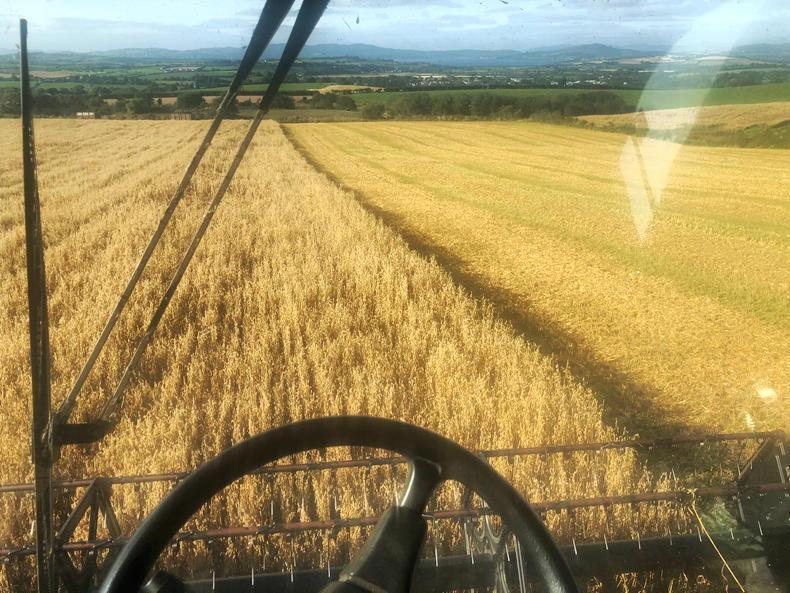
Michael Grant harvesting in Co Donegal.
Michael is generally happy with the season gone by. While there were no record-breaking yields, all crops were saved, which can be a very difficult task with the weather conditions in Donegal.
Moisture contents were good at harvest and drying was relatively easy, as too was handling and storage. Straw was gathered in good conditions and grain has moved to regular customers, but a good price will be needed to move the bulk of grain from the shed.
While Michael has struggled to get winter crops in, he does plan on increasing the area grown to cereals next year and will cultivate some grassland. This should help to reduce labour requirements on the farm.
High: “Crops grew fairly well. The harvest wasn’t too bad, everything was saved. We had no record-breaking yields.”
Low: “Crops were late going in in the spring time and we had a hard May.”
Downpatrick,
Co Down
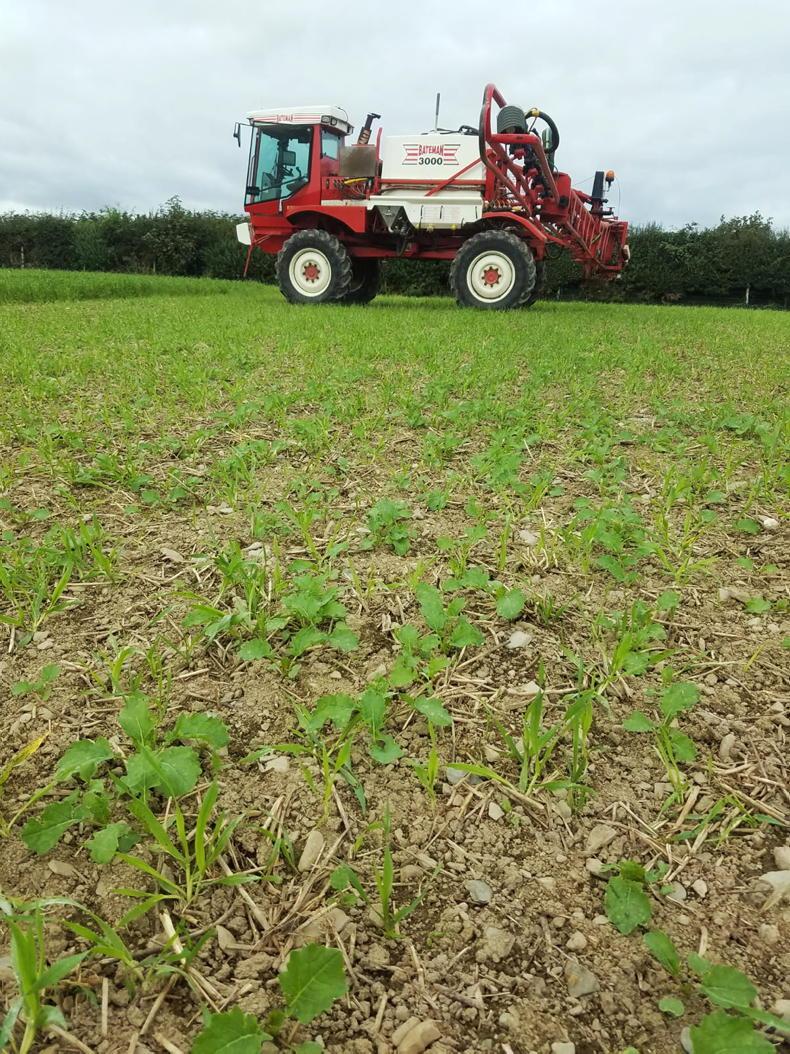
Spraying oilseed rape on Iain McMordie's farm in Co Down.
Iain was generally happy with the year gone by. He said: “With our spread of crops and reasonable weather at harvest there was never a panic to harvest anything”.
Crops performed generally well. However, winter barley was down in yield at approximately 3t/ac compared to the usual 4t/ac.
Barley yellow dwarf virus and wet conditions were thought to be some of the reasons behind this drop in yield. The winter wheat did OK, while the winter oilseed rape was similar and beans and oats performed well.
High: “It was a relatively easy year for us. It was an easy harvest with the least drying we have had to do in 40 years.” Iain said 1984 was a year with very little drying and it beat that hands down.
Low: Iain explained that when he started to drill in the spring and the autumn this year the tractor broke down both times. Another tractor was hooked up quickly and it wasn’t a big breakdown either time, but it slowed things down. However, he added it’s not too bad if that’s the low point of the year.
Robert’s Cove,
Co Cork
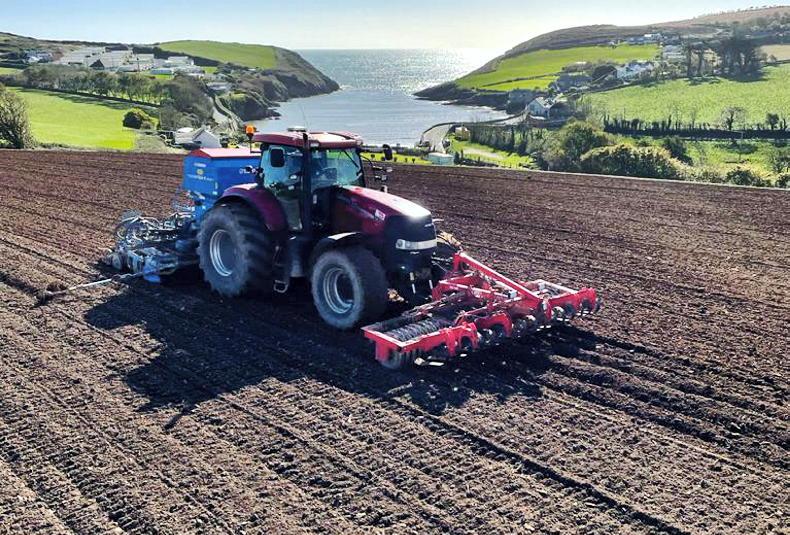
Dan Twomey planting Integral winter barley near Robert's Cove in Cork at 11 st/ac.
Dan said that weather wise it was a lovely year until October. Most of the ploughing for spring crops was done in January and sowing conditions were lovely from St Patrick’s Day on.
Crops grew well and the harvest weather made things a bit easier.
However, winter barley yield did not impress. Aside from this, the high malting price was very welcome and most other crops performed well. Most of the beet is still to be pulled.
All in all, Dan said prices were good for harvest and for crops that were in the shed from 2021. However the fertiliser and fuel bill was huge, and that is a concern if grain price drops.
High: “It was a nice year to get work done.” Dan added that prices were good and, aside from winter barley, the rest of the crops yielded well.
Low: “The lowest point was not being able to get the winter planting finished. We have been looking out at rain for the past three weeks. It’s nice when you can get planting done and spray afterwards.”
Ballyboughal,
Co Dublin
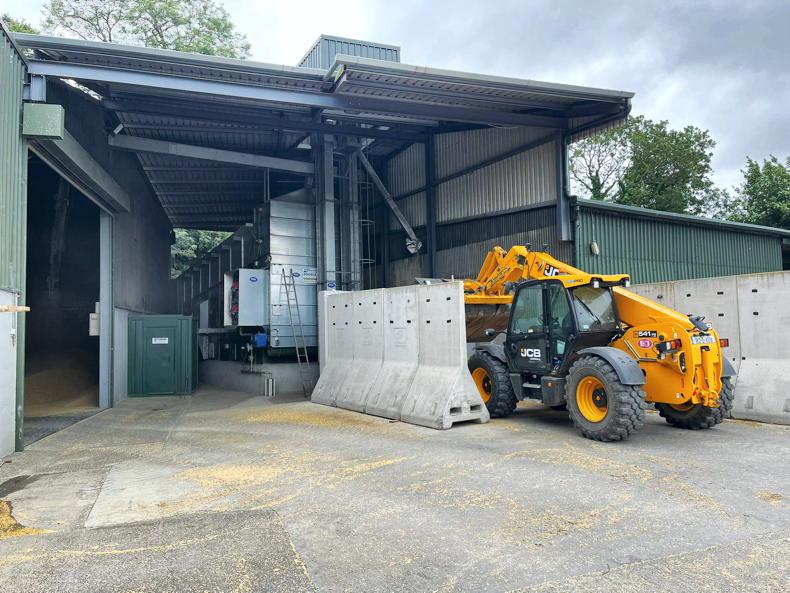
Keeping the dryer going on Derek Rogers' farm.
Derek said the crops on his farm all performed relatively well and he was happy enough across the board.
While fertiliser prices increased this year, so did grain prices and the worry is if these prices do not stay balanced. For example, machinery prices are increasing and are not following a trend with any commodity.
There are only a few acres of potatoes to be dug for the rest of the season and markets look somewhat better. Wet weather at present is preventing spraying and there are some bare patches in crops as well.
High: “All crops performed well. The price of grain has matched the cost of inputs and we had nine months of good weather.” Derek added that weather was ideal for the onion harvest in August.
Low: Derek said it was hard to look at grain price as the year went on, with some grain sold forward earlier in the year at lower prices and at the same time looking at input and machinery costs rising.
Slane, Co Meath
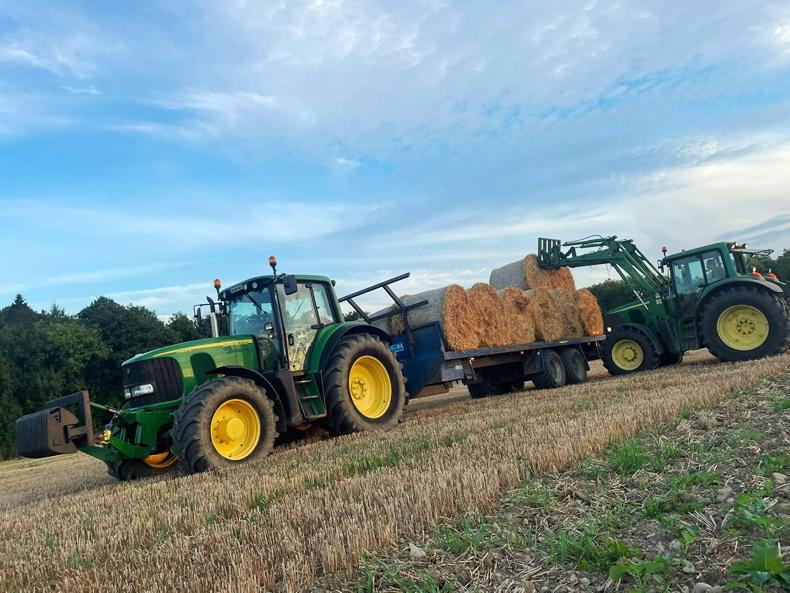
Clearing the last of the straw on Eamonn Cogan's farm in Co Meath.
Eamonn said the year began with war dominating events and attitudes. Food security was widely spoken about.
There was potential for a general change in consumer attitude to food and the importance of farmers, but it does not seem to have happened.
The EU seems immune to the current challenges and it continues to impose blanket changes and restrictions.
High: “Everything to do with weather was the high point of 2022. It was good for planting, good for spraying and very good for harvest. We should not forget crop yields and prices in these comments too and oilseed rape was particularly pleasing.”
Low: “Higher input costs, especially fertiliser, were the major negative for the 2022 crop. Fertiliser was the worst but all costs were kicked up by the inflationary pressures created by the war in Europe, including fixed costs. Winter barley yields disappointed and the weather for 2023 planting has been difficult at the end.”
Burren, Co Clare
While it may not be a lowlight yet, Shane is worried about this coming season and those that follow. Input costs are generally slower to fall than they are to rise but grain prices could fall in a shot.
We saw this happen many times before. High input costs, poor yields, low prices and bad weather next year would be exactly opposite to 2022.
Shane is also increasingly worried about the general shortage of staff and the fact that the Government is doing so little to support farming.
High: “Weather! It was unexpectedly easy compared with most other seasons. To be able to go out and do any job when needed and have the option to finish it tomorrow, there can be no other answer.”
Low: “This was definitely the price of inputs, all inputs, and where they had gotten to before the season had even started. Fertiliser was the big one by far but all other costs got a lift too.”
Avoca, Co Wicklow
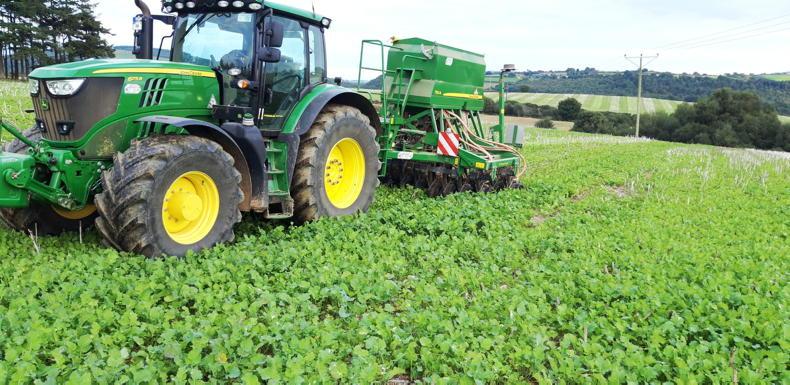
Stuart Fitzgerald planting into a cover crop in Co Wicklow.
It was pretty good and it’s going to leave a nice profit. That said, it’s leaving a profit, but money isn’t worth anything anymore. Stuart said fertiliser prices are high, but the grain price was too, so 2023 might be a more difficult year.
Stuart tried out a few different things on the farm this year and one of those was melting urea.
“Melting urea works, but there’s a lot of work with it. I was able to hold the yield with less fertiliser. It’s another way of reducing inputs. I was more efficient with nitrogen. The game is all about efficiency. That’s where the profit is.”
High: “The good weather during harvest was brilliant. It made everything a bit easier.”
Low: “It’s hard to pick a low, but maybe forward selling a bit of barley at the wrong time.”
Cahir, Co Tipperary
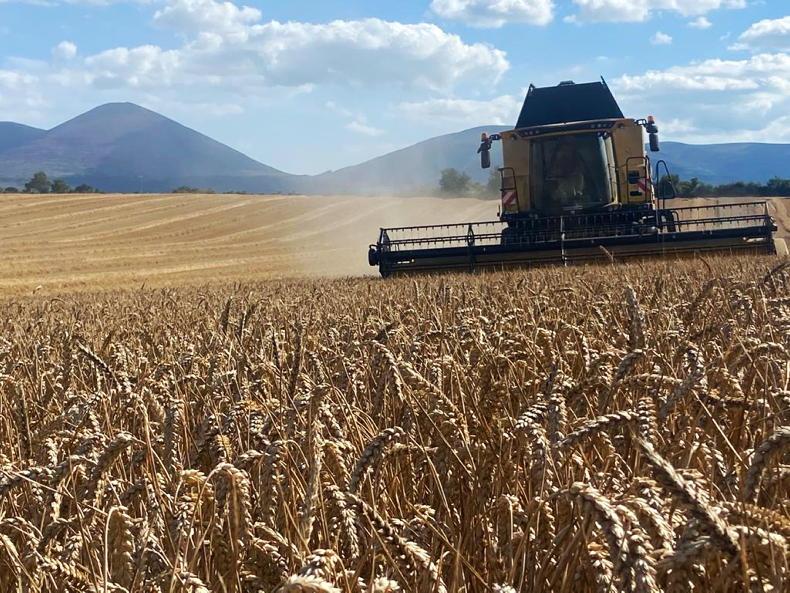
James English harvesting under The Vee in Co Tipperary.
Everything was nearly perfect this year. Yields were brilliant and the weather was good. James has left his cropping system basically the same for 2023, with rye and oilseed rape in the rotation.
“Having a good mix is key. It gives you a better chance and takes away some of the risk,” he said.
Break crops are an important part of the system on the farm and the area of these crops will be maintained as rotation is so important.
The minimum-tillage system on the farm is working well. Land is drying out quickly and grass weeds are being kept at bay.
High: “The harvest of 2022 will live in memories for a long time. The weather was fantastic.”
Low: “A war in Ukraine makes a high grain price. That’s not a good thing if that’s what it takes for us to make a decent living.”
Eglinton, Co Derry
Kenny noted that while it wasn’t the best year in his part of the country, it wasn’t the worst either. The harvest was fair enough and while fertiliser and input prices were high, grain prices helped to weather the storm.
Crops went well in the fields during the year. Disease pressure was low and yields were good. Wet weather has now made conditions difficult for winter planting, but some barley is now at the two-leaf stage and Kenny thinks it has weathered the storm.
High: Spring barley all averaged 2.8t/ac at 14% moisture content and while he thought straw yield was back, it was only back approximately 1.4 bales/ac on last year.
Low: It’s unusually wet for this time of the year with quite a lot of flooding compared to the last three or four years. However, Kenny did manage to sow some crops on Thursday and Friday last week.
Bennekerry,
Co Carlow
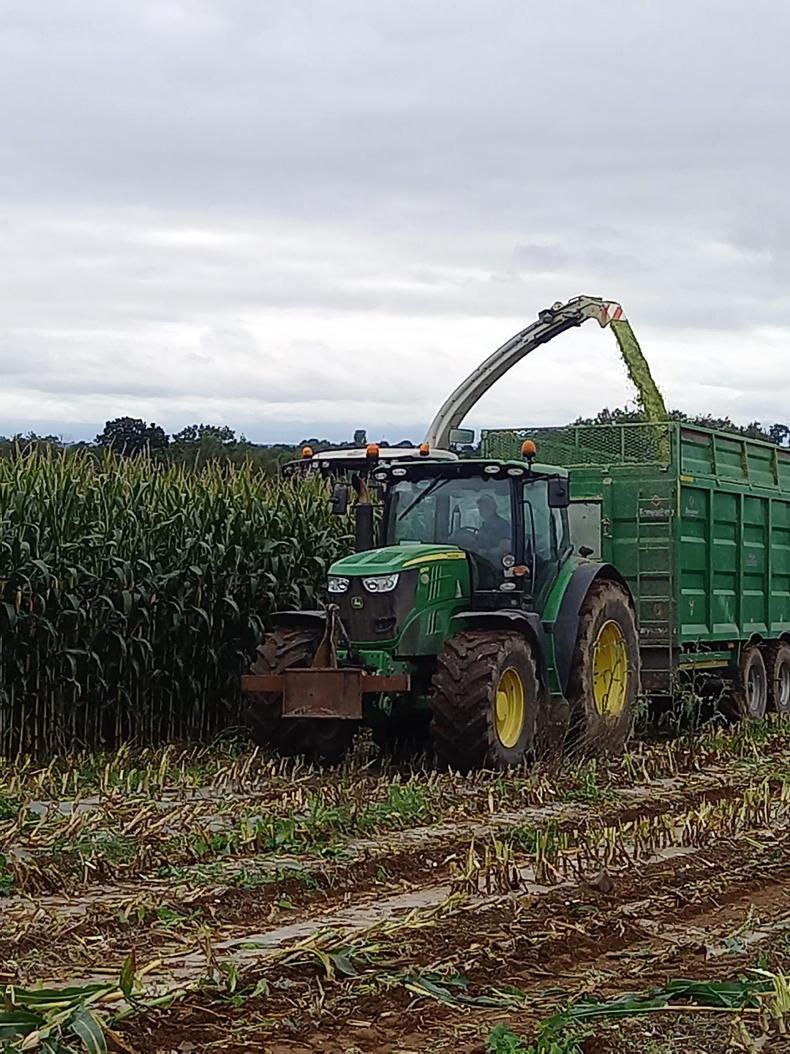
George Byrne's maize being harvested in Co Carlow.
George is very happy with how crops yielded this year and said it was a season you could not fault.
He commented that wind and rain in May was essential for a good harvest.
However, he said we have had a few good harvests and with expenses so high he is worried that there is a risk of lower crop yields in the near future.
Winter crops have had a very poor start and the warm October temperatures are a worry for barley yellow dwarf virus.
High: “I don’t ever remember a year that we got such a bounce on cattle and grain and good yields.”
Low: George is worried about the future. He said fertiliser and fuel prices are high and he fears that crops in the ground now may yield poorly as they have had a bad start.
The farmers who feature on the From the Tramlines page every week have kindly given readers an insight into their farming business. Very importantly, they have described the good and the bad of what happened on their farms.
It’s important to see how farmers approach different challenges and problems or even why they choose to use one fertiliser or spray over another and how these decisions affect their farms.
The Irish Farmers Journal would like to thank the 12 farmers from across the country for their time and their honesty. The effort is much appreciated and readers always comment on how they enjoy the page.
In the final feature of the 2022 season, the 12 farmers describe the year gone by and tell us some of their highs and lows from the season.
Cullahill, Co Laois
Séamus said 2022 was one of the best farming years ever. Work could be done when it was needed and there was always tomorrow. That meant that farmers could relax and enjoy their jobs.
The main worry now is for next year and the year after. Seamus also wants to remember those who lost their lives during the year, especially one young and dear friend.
High: The full package of harvest – weather, yields and price. It was an excellent harvest in every way. The great price for malting barley was the icing on the cake and all of the crop was accepted.
Low: The war in Ukraine seems so unnecessary and it has caused so much additional strife and cost globally. It changed the world in an instant. But on the farm, the failure of a crop of beet was a definite downer because he had to look at the poor establishment all year.
Bunclody, Co Wexford
It was just a textbook year when everything ran smoothly and according to plan, Patrick said. Crop yields were generally good and price was much better than had been anticipated.
The year produced a feel-good factor, left money for investment and it will remain in the mind for a long time to come.
High: “Harvest, it has to be harvest – it was so easy.” Patrick is a one-man operation and the good weather meant he could cut and haul himself and get everything done. There was no panic and there was always tomorrow. It was a Carlsberg-type year!
Low: The day an articulated lorry arrived in the yard with a load of fertiliser and he did not know whether to take it off or not, given its cost. It was a big decision to know whether to sow crops or not given the cost of production relative to forward grain price at that time.
Newtowncunningham,
Co Donegal

Michael Grant harvesting in Co Donegal.
Michael is generally happy with the season gone by. While there were no record-breaking yields, all crops were saved, which can be a very difficult task with the weather conditions in Donegal.
Moisture contents were good at harvest and drying was relatively easy, as too was handling and storage. Straw was gathered in good conditions and grain has moved to regular customers, but a good price will be needed to move the bulk of grain from the shed.
While Michael has struggled to get winter crops in, he does plan on increasing the area grown to cereals next year and will cultivate some grassland. This should help to reduce labour requirements on the farm.
High: “Crops grew fairly well. The harvest wasn’t too bad, everything was saved. We had no record-breaking yields.”
Low: “Crops were late going in in the spring time and we had a hard May.”
Downpatrick,
Co Down

Spraying oilseed rape on Iain McMordie's farm in Co Down.
Iain was generally happy with the year gone by. He said: “With our spread of crops and reasonable weather at harvest there was never a panic to harvest anything”.
Crops performed generally well. However, winter barley was down in yield at approximately 3t/ac compared to the usual 4t/ac.
Barley yellow dwarf virus and wet conditions were thought to be some of the reasons behind this drop in yield. The winter wheat did OK, while the winter oilseed rape was similar and beans and oats performed well.
High: “It was a relatively easy year for us. It was an easy harvest with the least drying we have had to do in 40 years.” Iain said 1984 was a year with very little drying and it beat that hands down.
Low: Iain explained that when he started to drill in the spring and the autumn this year the tractor broke down both times. Another tractor was hooked up quickly and it wasn’t a big breakdown either time, but it slowed things down. However, he added it’s not too bad if that’s the low point of the year.
Robert’s Cove,
Co Cork

Dan Twomey planting Integral winter barley near Robert's Cove in Cork at 11 st/ac.
Dan said that weather wise it was a lovely year until October. Most of the ploughing for spring crops was done in January and sowing conditions were lovely from St Patrick’s Day on.
Crops grew well and the harvest weather made things a bit easier.
However, winter barley yield did not impress. Aside from this, the high malting price was very welcome and most other crops performed well. Most of the beet is still to be pulled.
All in all, Dan said prices were good for harvest and for crops that were in the shed from 2021. However the fertiliser and fuel bill was huge, and that is a concern if grain price drops.
High: “It was a nice year to get work done.” Dan added that prices were good and, aside from winter barley, the rest of the crops yielded well.
Low: “The lowest point was not being able to get the winter planting finished. We have been looking out at rain for the past three weeks. It’s nice when you can get planting done and spray afterwards.”
Ballyboughal,
Co Dublin

Keeping the dryer going on Derek Rogers' farm.
Derek said the crops on his farm all performed relatively well and he was happy enough across the board.
While fertiliser prices increased this year, so did grain prices and the worry is if these prices do not stay balanced. For example, machinery prices are increasing and are not following a trend with any commodity.
There are only a few acres of potatoes to be dug for the rest of the season and markets look somewhat better. Wet weather at present is preventing spraying and there are some bare patches in crops as well.
High: “All crops performed well. The price of grain has matched the cost of inputs and we had nine months of good weather.” Derek added that weather was ideal for the onion harvest in August.
Low: Derek said it was hard to look at grain price as the year went on, with some grain sold forward earlier in the year at lower prices and at the same time looking at input and machinery costs rising.
Slane, Co Meath

Clearing the last of the straw on Eamonn Cogan's farm in Co Meath.
Eamonn said the year began with war dominating events and attitudes. Food security was widely spoken about.
There was potential for a general change in consumer attitude to food and the importance of farmers, but it does not seem to have happened.
The EU seems immune to the current challenges and it continues to impose blanket changes and restrictions.
High: “Everything to do with weather was the high point of 2022. It was good for planting, good for spraying and very good for harvest. We should not forget crop yields and prices in these comments too and oilseed rape was particularly pleasing.”
Low: “Higher input costs, especially fertiliser, were the major negative for the 2022 crop. Fertiliser was the worst but all costs were kicked up by the inflationary pressures created by the war in Europe, including fixed costs. Winter barley yields disappointed and the weather for 2023 planting has been difficult at the end.”
Burren, Co Clare
While it may not be a lowlight yet, Shane is worried about this coming season and those that follow. Input costs are generally slower to fall than they are to rise but grain prices could fall in a shot.
We saw this happen many times before. High input costs, poor yields, low prices and bad weather next year would be exactly opposite to 2022.
Shane is also increasingly worried about the general shortage of staff and the fact that the Government is doing so little to support farming.
High: “Weather! It was unexpectedly easy compared with most other seasons. To be able to go out and do any job when needed and have the option to finish it tomorrow, there can be no other answer.”
Low: “This was definitely the price of inputs, all inputs, and where they had gotten to before the season had even started. Fertiliser was the big one by far but all other costs got a lift too.”
Avoca, Co Wicklow

Stuart Fitzgerald planting into a cover crop in Co Wicklow.
It was pretty good and it’s going to leave a nice profit. That said, it’s leaving a profit, but money isn’t worth anything anymore. Stuart said fertiliser prices are high, but the grain price was too, so 2023 might be a more difficult year.
Stuart tried out a few different things on the farm this year and one of those was melting urea.
“Melting urea works, but there’s a lot of work with it. I was able to hold the yield with less fertiliser. It’s another way of reducing inputs. I was more efficient with nitrogen. The game is all about efficiency. That’s where the profit is.”
High: “The good weather during harvest was brilliant. It made everything a bit easier.”
Low: “It’s hard to pick a low, but maybe forward selling a bit of barley at the wrong time.”
Cahir, Co Tipperary

James English harvesting under The Vee in Co Tipperary.
Everything was nearly perfect this year. Yields were brilliant and the weather was good. James has left his cropping system basically the same for 2023, with rye and oilseed rape in the rotation.
“Having a good mix is key. It gives you a better chance and takes away some of the risk,” he said.
Break crops are an important part of the system on the farm and the area of these crops will be maintained as rotation is so important.
The minimum-tillage system on the farm is working well. Land is drying out quickly and grass weeds are being kept at bay.
High: “The harvest of 2022 will live in memories for a long time. The weather was fantastic.”
Low: “A war in Ukraine makes a high grain price. That’s not a good thing if that’s what it takes for us to make a decent living.”
Eglinton, Co Derry
Kenny noted that while it wasn’t the best year in his part of the country, it wasn’t the worst either. The harvest was fair enough and while fertiliser and input prices were high, grain prices helped to weather the storm.
Crops went well in the fields during the year. Disease pressure was low and yields were good. Wet weather has now made conditions difficult for winter planting, but some barley is now at the two-leaf stage and Kenny thinks it has weathered the storm.
High: Spring barley all averaged 2.8t/ac at 14% moisture content and while he thought straw yield was back, it was only back approximately 1.4 bales/ac on last year.
Low: It’s unusually wet for this time of the year with quite a lot of flooding compared to the last three or four years. However, Kenny did manage to sow some crops on Thursday and Friday last week.
Bennekerry,
Co Carlow

George Byrne's maize being harvested in Co Carlow.
George is very happy with how crops yielded this year and said it was a season you could not fault.
He commented that wind and rain in May was essential for a good harvest.
However, he said we have had a few good harvests and with expenses so high he is worried that there is a risk of lower crop yields in the near future.
Winter crops have had a very poor start and the warm October temperatures are a worry for barley yellow dwarf virus.
High: “I don’t ever remember a year that we got such a bounce on cattle and grain and good yields.”
Low: George is worried about the future. He said fertiliser and fuel prices are high and he fears that crops in the ground now may yield poorly as they have had a bad start.














 This is a subscriber-only article
This is a subscriber-only article










SHARING OPTIONS: